Learning to read is a complex journey that utilizes many skills, it is much more than connecting the sounds of speech to the letters in words. Just as an infant takes their first steps to walk, every step a child takes toward learning to read leads to another. Gradually, tentatively, a child gathers essential information and skills that are necessary for being a reader. These foundational skills have been emphasized during the Every Child Ready to Read program. Building Readers provides continuing tools, suggestions, and ideas to enrich a child’s journey towards their love and joy of reading.
How to Recognize a Child’s Reading Readiness in the Six ECRR Skill Areas?
Recognizing a child’s reading readiness in the six key areas of Every Child Ready to Read will empower a librarian in assisting with Building Reader resources and activities. When we are aware of a child’s developing literacy skills we can better promote and enable growth and enjoyment of reading. These guidelines can be used in conversations with caregivers and during readers advisory.
Every Child Ready to Read Building Reader Recognition Skills:
Vocabulary:
- The child speaks in complete sentences most of the time.
- The child understands and follows directions with at least two steps.
- The child is beginning to understand vocabulary related to position, direction, size, and comparison.
Print Motivation:
- The child likes to choose their own book.
- The child may ask that you read the book to them.
- The child may pick up a book and attempt to read it.
- The child will point to letters they recognize around them.
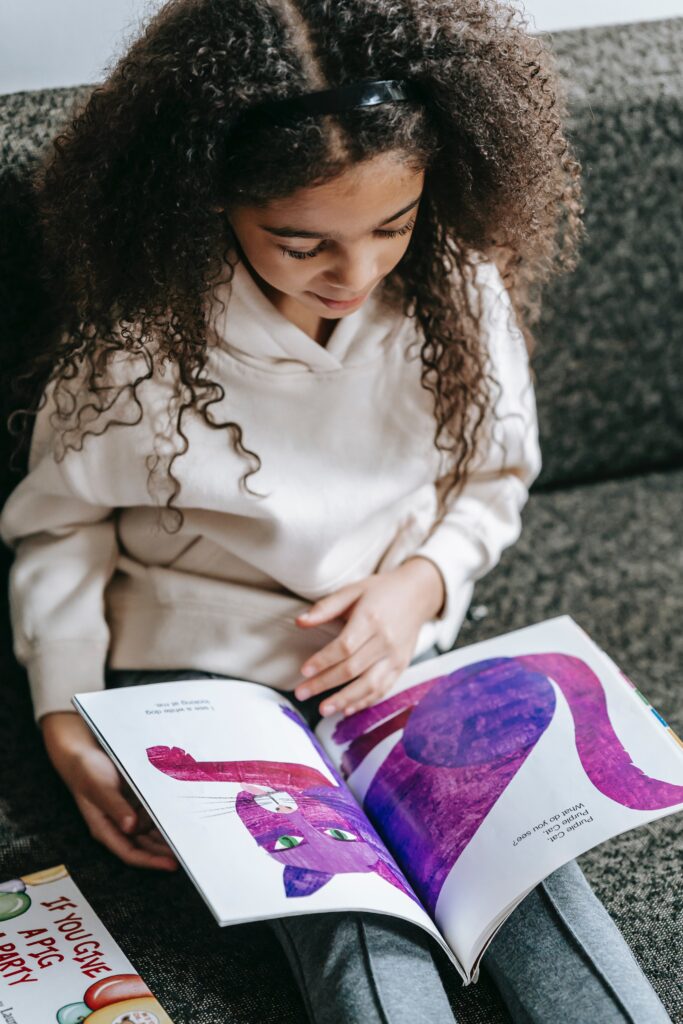
Print Awareness:
- The child views the pages of a book from left to right when being read to and may turn the pages of the book correctly.
- The child will hold a book the right way up.
- The child may show awareness of the connection between print and what it says.
- The child may pick out individual letters.
- The child’s drawings show definition and distinction and are relatable to the object that they are depicting.
- The child begins to try to write of scribble letters and sentences
Narrative Skills:
- The child will retell a simple story after listening to a picture book.
- The child may participate in repeating a familiar song or poem, finger play, and/or nursery rhyme.
Phonological Awareness:
- The child is beginning to identify two words that rhyme/sound the same.
- The child can hear individual words in sentences and individual sounds in words.
Letter Knowledge:
- The child is beginning to recognize letters, especially those in their name.
- The child is beginning to match letters with the sounds they make.
The simplest way to make sure that we raise literate children is to teach them to read, and to show them that reading is a pleasurable activity. And that means, at its simplest, finding books that they enjoy, giving them access to those books, and letting them read them.
— Neil Gaiman, Why our future depends on libraries, reading and daydreaming
Ways Librarians can Support Building Readers:
Librarians can support families and young readers who utilize the library looking for help and advice in the following ways. Librarians can help children see themselves as readers and give them the tools to empower their reading journey:
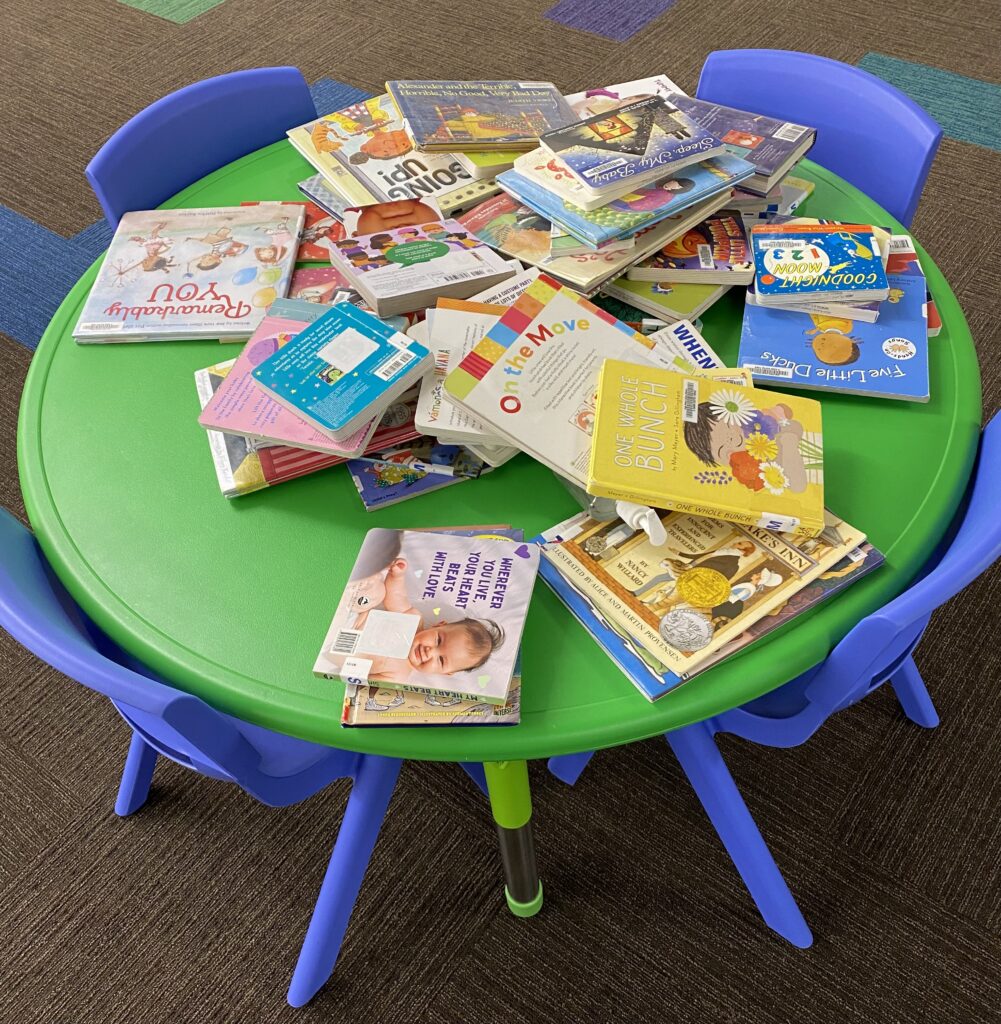
- Help children search for books that they will enjoy reading:
- Point children towards books that have accurate high-quality content and creatorship.
- Be knowledgeable about decodable books and suggest books that support skills for developing readers.
- Be aware of popular authors who write books for building readers.
- Suggest non-fiction books that relate to the child’s interests.
- Help children make their own decisions and choices, leading to increased self-esteem and confidence.
- Remember beginning readers still love being read to.
- Focusing only on books a child can read independently greatly reduces their choices.
- When adults read higher-level books to children they are building the child’s vocabulary, reading comprehension, and fluency.
- Try to send families home with three kinds of books:
- Books the child can read independently.
- Books of high interest that the child can read with help.
- Books of high interest an adult can read to the child.
- Look for books that children can read successfully:
- Decodable books limit text to words that can be sounded out phonetically and do not rely on using the pictures or repetition to guess the word. These books often have simple text based around a phonetic pattern and word lists in the back.
- Look for picture books that incorporate simple sentences with one or two lines per page and enable children to experiment and explore articulating sounds.
- Check readers for the amount of text on the page and especially look for easy reader books that have minimal punctuation for easier deciphering of text.
- Leveled readers assist children in making the transition between picture and chapter books and are best for children gaining mastery, or as a book to read together with an adult. These books are often not decodable or easy, but they are of high interest.
- Be knowledgeable about different reading levels, but understand that reading levels are one of many tools that guide a child’s reading and should not restrict their book choices.
- Talk with your local schools to learn what type of reading level systems they utilize. Knowledge of these levels will help when caregivers ask for books at their child’s level. Some of the most common leveled reading systems are:
- Book levels are not consistent between various publishers and are often confusing for families to relate to. Evaluate the books in your collection in order to recommend or arrange books in simple levels:
- Early Reader
- Beginning Reader
- Developing Reader
- Independent Reader
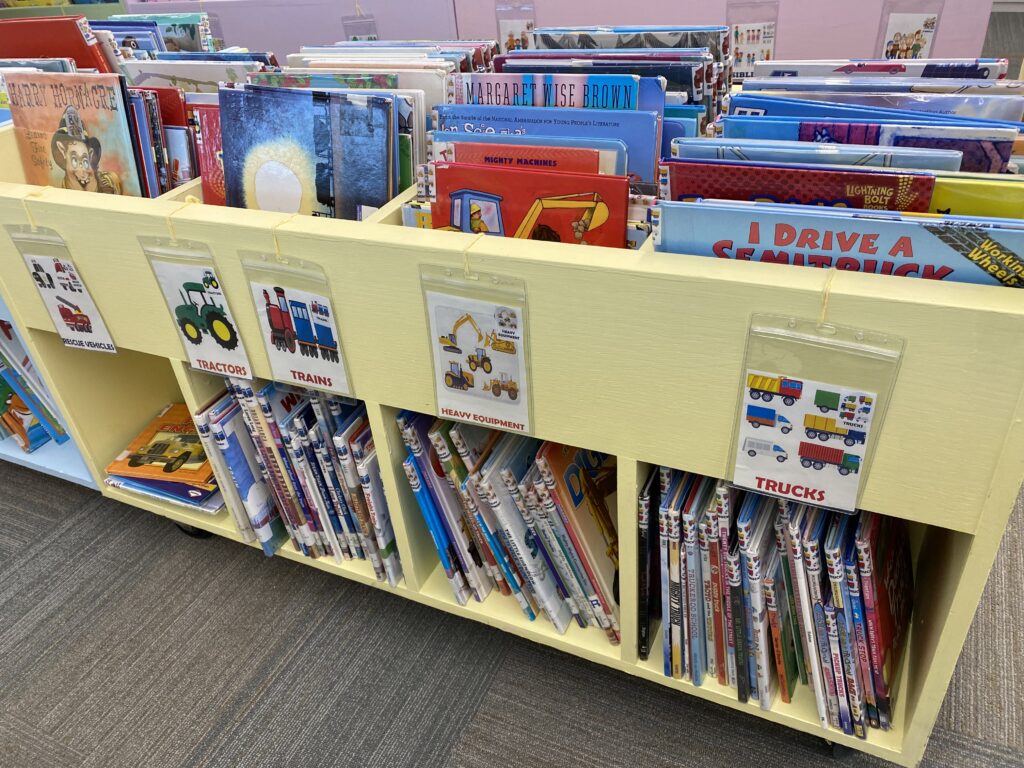
- Organize Chapter Books separately:
- Dedicate an area exclusively for chapter books that families can easily access and choose appropriate books.
- Organize and arrange chapter books to enable children to become independent and take care of their own reading choices.
- If your space does not allow for separate shelving, try shelf labels or call-outs to assist families and children that are transitioning to chapter books but may not be familiar with popular authors such as Daisy Meadows, Mary Pope Osborne, and Geronimo Stilton.
- Arrange books by topics or by subjects rather than by Dewey decimal:
- Intermingle non-fiction books with fiction picture books to encourage children to expand their reading choices and to easily find books that they are interested in.
- Organize books by topics of interest to the children, by author, or by type – rhyming books, pop-up books, etc.
- Create appealing displays of a mixed variety of books that cover specific topics or subject areas.
- Provide an inviting reading environment:
- Incorporate big comfy pillows and a few book-related toys, as well as stuffed animals and puppets, that children can read to.
- Establish a listening area where children can use an audio player and headphones to listen to recordings of favorite books.
- Make a space where children can create their own bookmarks to color and books to write in. This may include folded stapled paper to resemble blank books, colored paper for covers, crayons, pencils, and washable markers. Traceable letters, sandpaper letters, stencils, and an alphabet chart may also be provided to entice children to explore letters and encourage writing.
- Provide designated children’s interactive devices such as computers and tablets.
Ideas and Suggestions of Services and Programs Libraries can offer to Families and Children to Support Building Readers:
Libraries can support and enable families to build readers in many ways. Listed below are some suggestions that other libraries have used:
Partner with local schools to welcome new readers:
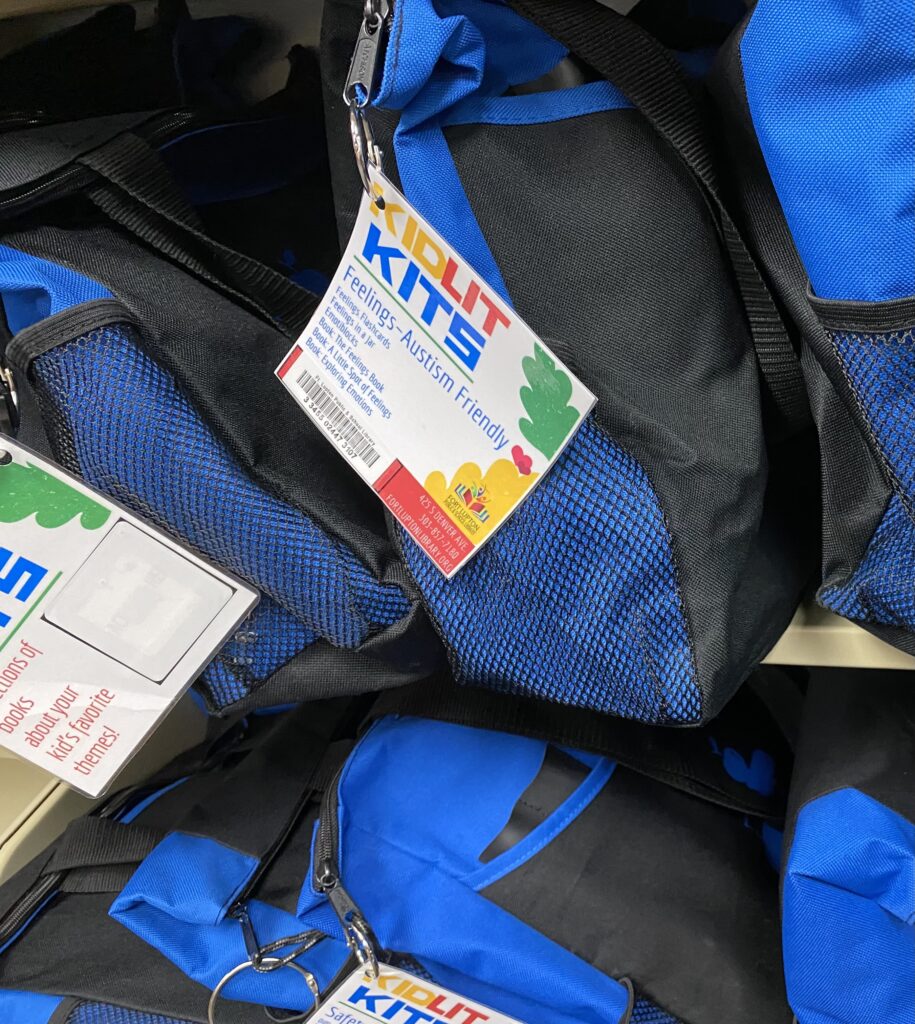
Provide circulating kits with curated books and activities to support reading development:
- Reading Packs:
These packs contain an assortment of picture books, audio CDs, and supporting materials to encourage the building of literacy skills of children.
- Literacy Backpacks:
contain books, puppets, audio CDs, games, and literacy resources for families to borrow.
- Storytime in a Bag:
contains an assortment of books concerning the same topic area making for easy selection and accessibility.
- Shared Reading and Read-Aloud Book sets:
In partnership with local schools, the library offers shared reading and read-aloud book sets. This supports joint reading initiatives and promotes shared parent and child reading.
- Story Sharing:
Invite parents and children to a thematic story-sharing program with an emphasis on promoting reading for pleasure, and to promote books. Programs would include a craft supporting the theme and a take-home book.
Provide after-school and passive programs focused on supporting the unique reading needs of children in early elementary:
- Artful Books:
After reading a story, families are given the opportunity to use an art medium to visually bring the story to life. Skills such as recall, comprehension, discussion, and conversation between caregiver and child would be encouraged. Select picture books with more complex text and open-ended art projects to attract and support early elementary students.
- Reading in Review:
Aimed at families who would like to increase their child’s confidence and love of reading. Participants read a required number of books, rate and review them in a library-issued notebook, they are presented with a certificate upon completion. The completion certification boosts a reader’s confidence by offering tangible proof of their success.
- Book Groups:
Establish a children’s book club or group. The concept is the same as an adult book club but this one is for children only. Likeminded children gather together to discuss a recommended or agreed-upon book. Early chapter books and even beginning reader books can also be used and the books are short enough to read together. A kid-friendly website such as bookopolis.com could be used as a virtual bookshelf similar to Goodreads.

- Paws-to-Read: Give children the opportunity to read to a dog by providing a program such as Paws-to-Read. Numerous organizations across the country specialize in training service dogs to be reading companions. A Paws-to Read time with a canine companion enables children to read to a non-judgmental listener.
- Reading Buddies: Kids in grades K-3 are teamed with teen volunteers to read, write and play games together. The goal is to work with an older buddy to foster a joy of reading and books.
Useful Tips and Tricks for Librarians, Children, and Caregivers
How to help children and families P.I.C.K or choose the right books to read and being able to utilize the Five Finger word rule will guide and inform building readers and provide tools to use to enable success in reading.
- Help kids to P.I.C.K. the right books:
- Purpose
- Interest
- Comprehend
- Know the words
- Five finger word rule:
- If a child is unable to read more than five words on a page, then they may want to consider another book to read.
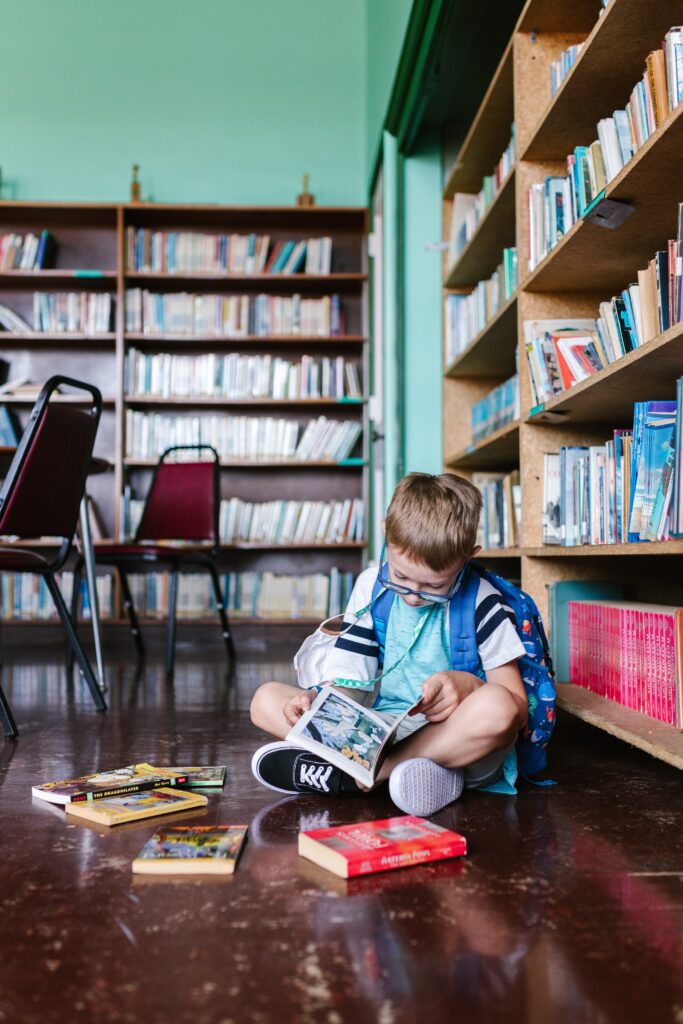
Useful Reading Terminology to Know:
Frequently used terminology for building readers:
- Decoding
- To sound out individual words or phonemes, a child uses their knowledge of letter-sound relationships.
- Comprehension
- A child’s enjoyment and effectiveness of reading are enhanced by their ability to understand what they are reading.
- Fluency
- Fluency is reflected in a child’s ability to read effortlessly and accurately.
- Context clues
- The author provides clues or hints that enable the reader to decode difficult or challenging words within the text.
- Making inferences
- A child uses the information in the text to make conclusions or figure out what is being implied.
References:
Anderson, K., & Kozla, B. (2020). Fostering Readers: Addressing the Knowledge Gap for Sering Beginning Readers. Children and Libraries.
Fostering Readers. (2019). Key Elements and Key Strategies for Successful K-3 Literacy Programming.
Mascott, A. (2013). Help Kids to P.I.C.K. the Right Books. Scholastic Parents: Raise a Reader
National Center for Learning Disabilities, Inc. Transitioning to Kindergarten.
